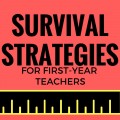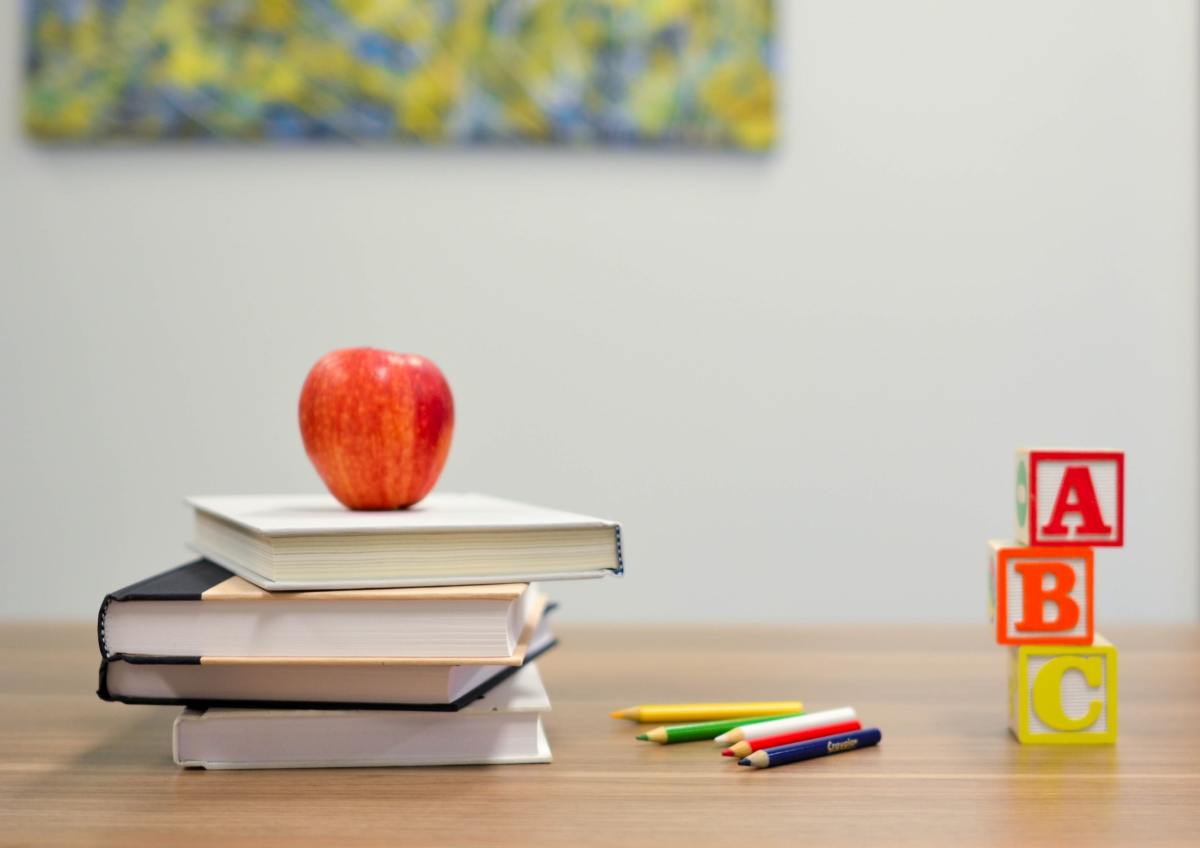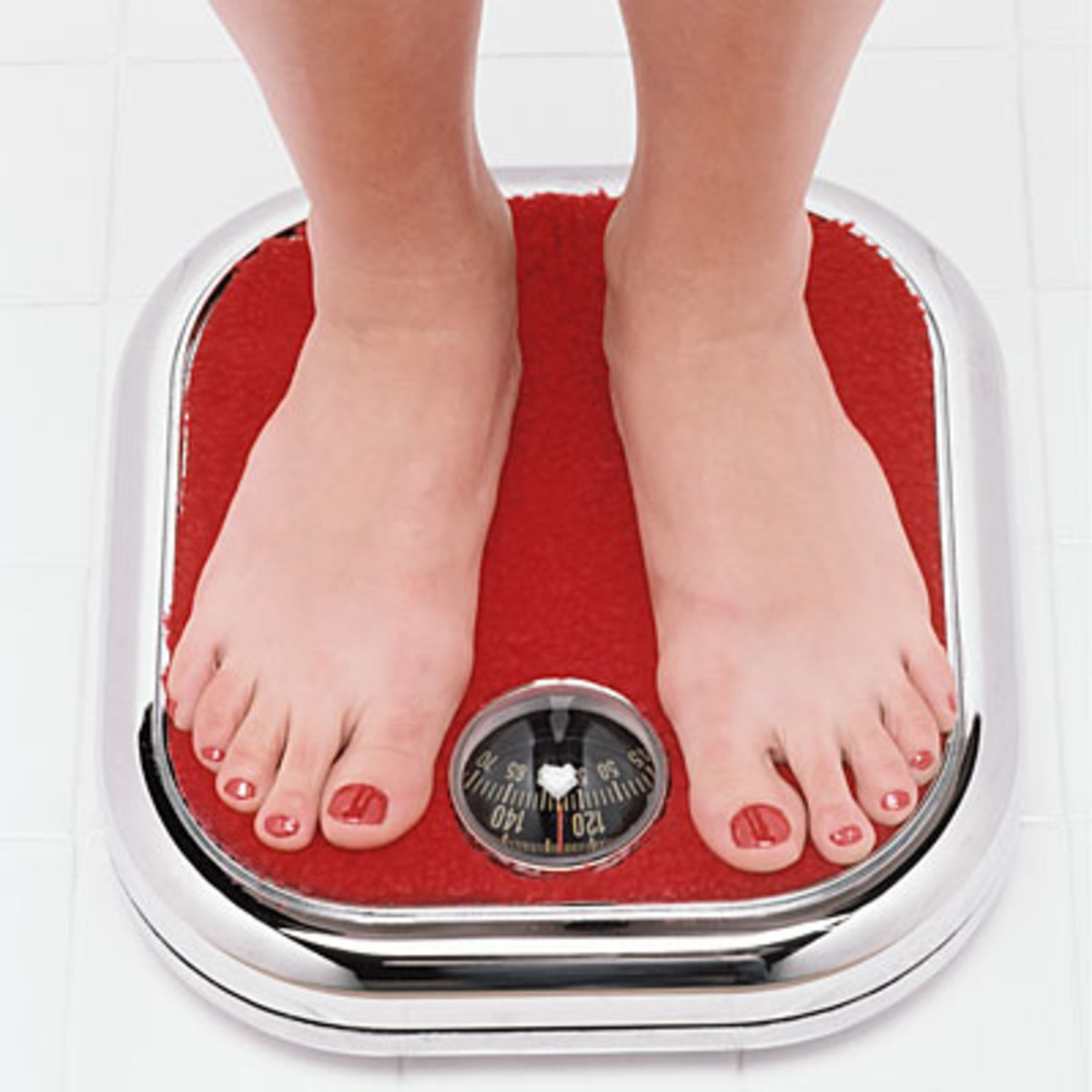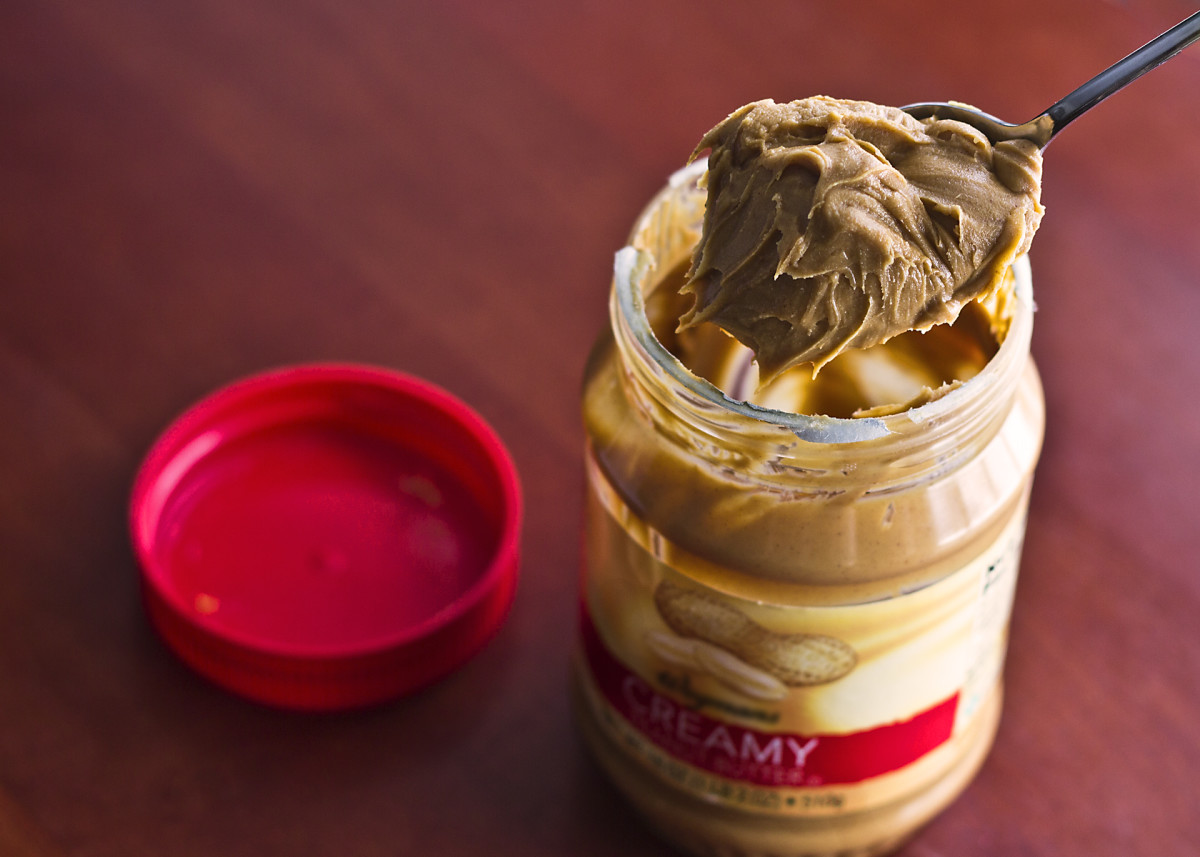How teachers can lose weight using teaching strategies

I began to use the same smart learning strategies I taught kids to improve my own health
It’s interesting how teachers give students valuable advice for success that they don’t often follow in their own personal lives. If they did, they could enjoy personal achievement in all areas of their lives and not just in the classroom. In this three-part article series, I share with you how I employed some teaching methods to achieve some of my personal goals. In this one, I explain how I learned how to change my physical lifestyle.
As a teacher, I knew that being more physically active was good for both mind and body. Students had physical education on a regular basis, but I didn’t. In fact, my life was rather sedentary. I sat behind a desk to plan lessons and grade assignments. I did walk around the classroom but once I got home from work, I plopped into a comfy chair and didn’t get up. Teaching is exhausting.
My number one personal concern was my health. My diet and exercise habits were appalling. If I had to give myself a grade, it would have been an F for failure to do anything about it. My attitude was a U, unsatisfactory. It’s funny how teachers can provide support and guidance for students to achieve their highest potential but why couldn’t I do the same for myself?
That’s when I decided to apply some teaching skills to my own life. To be both the teacher and the student at the same time.
Keeping it simple: GPA
G: Goal setting
The state education department, school site administrators, and teaching staff all establish academic goals for every grade level. In the classroom, teachers adjust for individual needs. What goals did I have for my health? They were quite vague: Eat better. Exercise. Lose weight. They remained vague and thus, elusive. I needed to nail down concrete, specific and MEASURABLE goals just as I would when designing an academic goal for students.
My specific, measurable goals became:
-
Drink six glasses of water daily. A glass before and between meals.
-
Eat fresh, unprocessed foods.
-
Get to the gym five times a week.
-
Walk for 45 minutes on the treadmill.
Those goals were concrete, specific, and measurable. (Sound familiar?) Are these reasonable goals? My first treadmill goal was an hour walk but after only a few weeks, my feet and calves began to have a lot of pain. An hour was unreasonable for me. When I scaled back, with both warm-up and cool down time included, the pain went away. Now, I understand that some gym philosophy goes, “No pain, no gain” but I subscribed to the comedian Paula Poundstone’s take: “No pain, no pain.” Pain is your body’s self defense mechanism and went it sets off a pain alarm, I listen!
Anyway, do set a reasonable amount of time for yourself. If only 15 minutes for you is doable, do 15 minutes. At first, my goal was just to GET THERE on a regular basis.
P: Preparation
Once reasonable goals are set, teachers help students get on their way by preparing them for the journey. Academic time is lost when there are no supplies like books, pencils, and paper or when the iPads aren’t charged. You must prepare for your journey towards reaching your goals. I prepared myself by doing the following at the end of every day:
-
Filling a 48-oz pitcher with water and having it ready in the refrigerator.
-
Filling water bottles to take to work.
-
Having my gym clothes, shoes, and earbuds ready to go in the car so I could go at any time.
-
Charging my phone to use while on the treadmill.
-
Having healthful foods in the pantry and refrigerator.
-
Packing healthful foods on Sundays to have ready for the week.
By doing all of this beforehand, I avoided last-minute rushes. When you have to rush, you tend to panic and when you panic, you want to avoid what makes you panic which means ditching the gym or health eating. I didn’t have to think about planning my actions every day because I was always ready. Being prepared eliminates stress.
A: Accountability
Students are kept accountable by the teacher although a good teacher will teach students that when they are accountable to themselves, they will be achievers for life. There is no one to be accountable to when you’re trying to lose weight unless you pay to go to a weight loss program with weigh-ins. Why not be accountable to yourself? Again, be the student and the teacher.
Once I saw it this way, that I should be on the honor system with myself and hold myself accountable for reaching my goals, I stepped up. How could I expect more of my students than I expected from myself as a person? That is integrity. If I taught it, I had to walk the talk.
It actually felt good to be able to tick off on a calendar the days I went to the gym. I also kept a journal and recorded my feelings of success. Ultimately, the one to whom I was accountable was myself. It was my mind and my body. THEY would grade my performance by operating optimally. If I fell short, my mind and body would show it.
It actually felt good to be able to tick off on a calendar the days I went to the gym. I also kept a journal and recorded my feelings of success. Ultimately, the one to whom I was accountable was myself. It was my mind and my body. THEY would grade my performance by operating optimally. If I fell short, my mind and body would show it.

"Never never never never give up!" ~Winston Churchill
Keep trying
Another problem I had in the past was that I simply gave up before reaching my goals. Part of that was a problem with accountability. There was no one to chide me for giving up. On the other hand, there was no one to cheer me on either. This is why joining some weight loss support groups can be helpful. They not only help with accountability but they also cheer you on when your motivation wanes.
Unfortunately, I just didn’t want to join a group. It would be one more event to attend in my already packed schedule and to take away from family time. Besides, I wanted to be my own cheerleader, my own teacher, remember?
I kept my students in mind when I fell short of reaching my daily goals. What would I tell them? Keep trying! Sometimes, success is just showing up--again and again. So when I missed a gym trip, instead of letting it turn into two days, then three, I just showed up the next day without berating myself for the one missed session. I kept going and never looked back at that “failure.” I became mindful of my own negative self-talk and instead talk to myself as I would if I were my own student. I would be incredibly supportive and encouraging rather than judgmental and condemning. “You can do this.” “You will do this.” “Small steps still get you there.” “You wouldn’t scold a baby for falling as he’s trying to learn how to walk. Be patient with yourself.” “You’re amazing.” “You can do anything if you put your mind to it.”
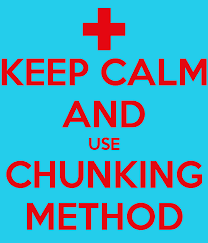
The magic of Chunking and Reframing!
Chunking (breaking things down into small steps)
It isn’t in my nature to enjoy physical activity. Sad for me, I wasn’t the sporty type so moving on a regular basis didn’t come naturally. Forty five minutes on the treadmill seemed interminably long but I made it easier by employing the use of an old education technique called, “chunking.” The brain learns and remembers more easily when information is broken down into chunks which is why telephone numbers and credit card numbers are not one long stream but broken into chunks.
I would break down my hour treadmill walking session into chunks: Five minute warm up, then I sped up the pace and count down the next 10 minutes. Then, I would count down the next 15 minutes. Then, the next ten and suddenly I was home free with a five-minute cool down. Believe me, it makes a difference to count down small amounts than it is to count down the entire session. It works. It worked when I walked the whole hour and time flies when you chunk it.
Baby steps in the right direction still get you to your destination, I’d tell myself. Just getting to the gym. Just show up. Just drink this one glass of water for now. Just choose the veggies instead of the chips for now. Get the ball rolling and your motivation and resolve gets stronger with every positive choice. You don’t have to become a superstar in this effort overnight. Just make one, small, positive choice FOR THIS MOMENT. You can choose a different option next time. Chances are though, that one good decision leads to another. (Beware, one bad decision tends to lead to another bad one, too.)
Reframing
Another technique that was essential to my success was “reframing.” It’s an attitude and perspective thing. My previous attitude towards exercise was not good. Pushing my muscles “hurt” and sweating felt “icky”. Getting out of breath felt unpleasant.
Reframing is a mind technique where you see something from a different perspective. How did athletes endure all that pain and sweat? Did they simply push through all of it? Why? What was the reward? Turns out that reaching the goal wasn’t the only reward for them but they actually enjoyed the process of getting there. How? They didn’t see muscle strain as pain but as stretching. Stretching felt good. The breaking down of muscle in order to rebuild it took strainful effort but they didn’t see it as hurting. Sore muscles, sure. But their minds interpreted that soreness as rebuilding. That was rewarding.
When I began to change my perspective into an athlete’s perspective, the straining of muscles no longer hurt. It felt, dare I say, good. I knew that my muscles were working and getting stronger.
My feeling “out of breath” also underwent a change. I learned how to breathe in deeply and rhythmically instead of panting. It became a meditation, of sorts. The way I saw it, I was oxygenating my bloodstream. It was good for my brain.
When it came to that awful sweating (or as my little girl was called it, “water coming from my head), I remembered that someone mentioned that sweating was good for my pores. As I aged, I noticed that my skin was not only losing elasticity but was looking dull and lifeless. I had turned to pore cleansers to no avail. Now when sweat seeped through my pores, I thought of it as a natural facial, pushing out all those impurities. As time went on, my skin benefitted not only from sweating but from the oxygen-rich blood pumping throughout the tiniest of capillaries everywhere. My face looked fresher. Weight loss might not be immediately noticeable but a strong blood flow improved my energy level and my countenance after every work-out session.
Reframing exercise time
Not only did I reframe how I viewed exercise and sweating, I began to see my gym time as personal “me” time that included time alone, time to catch up on news, time to listen to my language tapes, time to stave off brain health problems like Alz or dementia, and time for my facial. We don’t normally like to spend an hour at the gym but we wouldn’t think twice about lying still for an hour-long facial, would we?
I can’t tell you how thrilled I was to be able to change my paradigm like this. I actually liked and looked forward to getting to the gym. This was a major coupe!
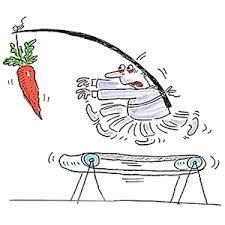
About rewards
Many people try to incentive-fy their health goals but I knew that they just wouldn’t work for me. I didn’t care about getting a new dress or a reward meal. My master’s thesis for my education degree was about intrinsic versus extrinsic rewards for students, and studies show that giving student external rewards actually lessen their long-term motivation to reach their academic goals. The act of doing should be the reward itself. Curious students became successful and lifelong learners. I knew that my new goals had to be my new lifestyle and I had to love it. Thanks to reframing, I did. For once in my life, I feel active. I’m doing something positive to feel great, get healthy, and look younger. To protect my brain.
Soon, I will set new goals to include weight training and maybe even start running rather than walking. Just for the fun of it. As Mary Poppins says, “In every work to be done, there is an element of fun. Find the fun and snap--the job’s a game. And every task you undertake, becomes a piece of cake…” I found it! And it’s not only Mary Poppins who teaches this but also human motivation specialist Anthony Robbins who reminds us to attach pleasure to any previously unpleasant task to achieve your goals. And success feels good.
Teachers guide students to higher knowledge which improves their lives in many areas. Yet, teachers are human, too, with their own flaws and weaknesses. They often sacrifice their own well-being by neglecting their own personal needs. But by being their own teacher, they too can make improvements and thus, teach by example how to live a quality life while enjoying theirs to the fullest.

